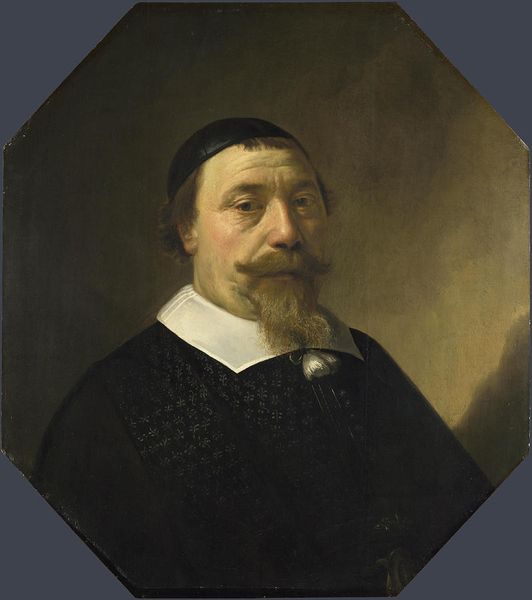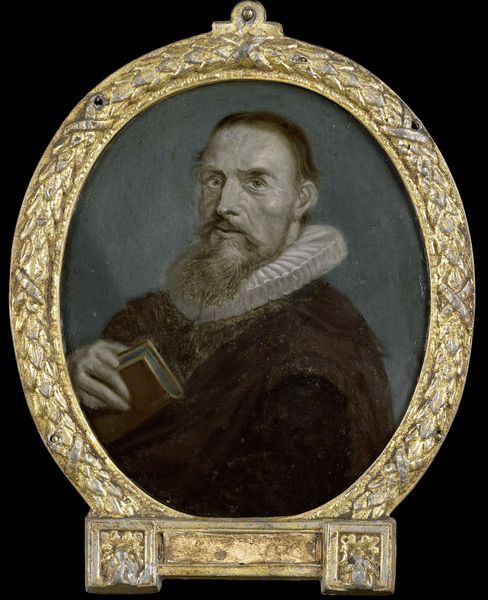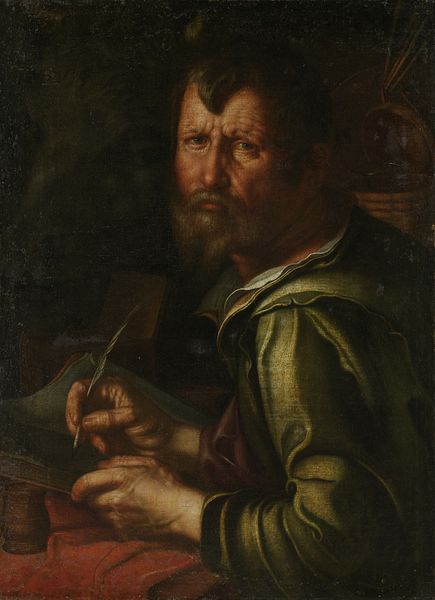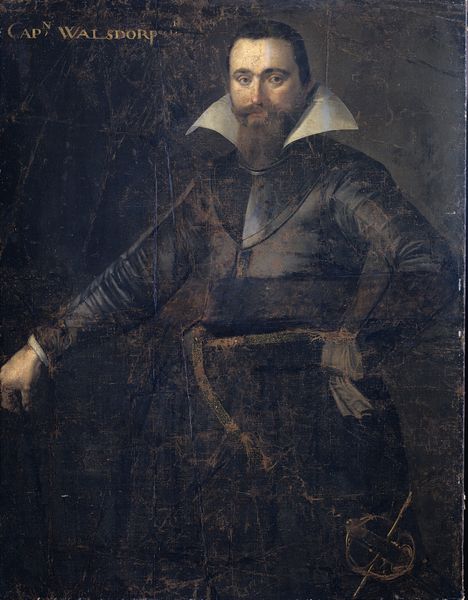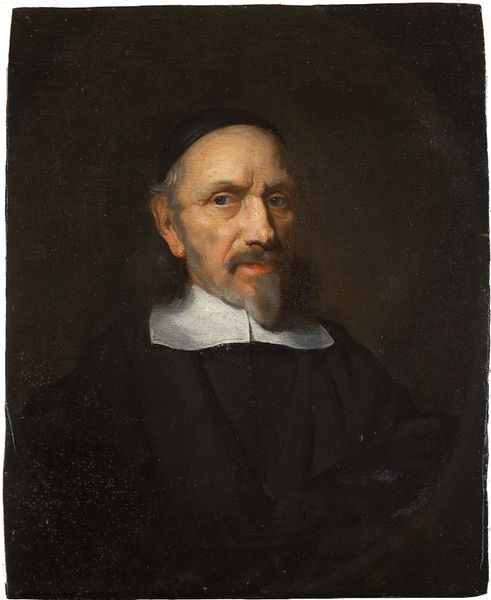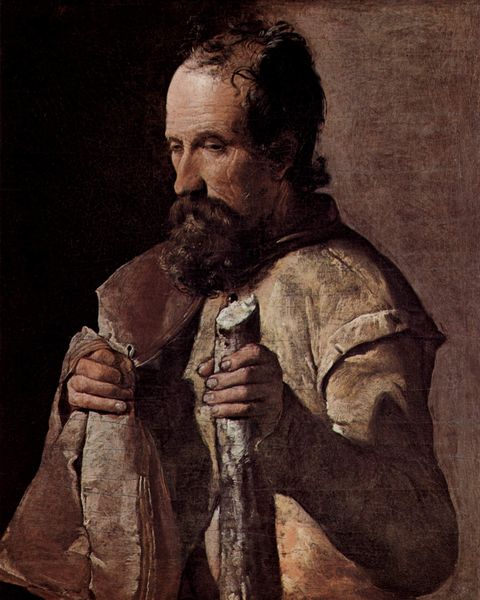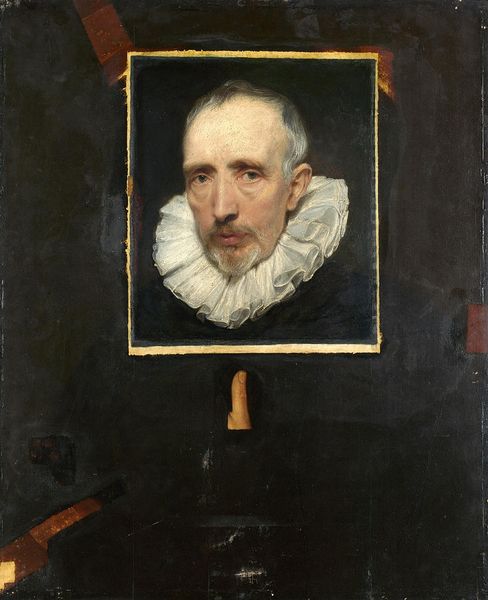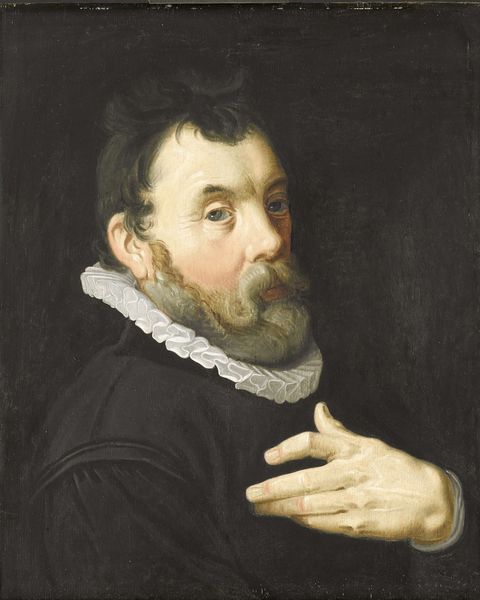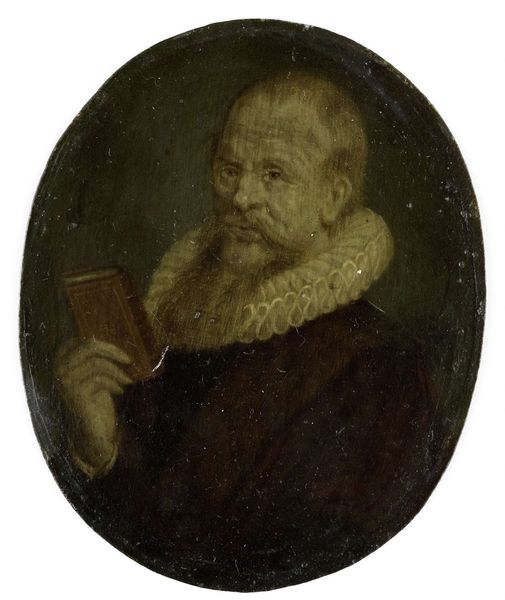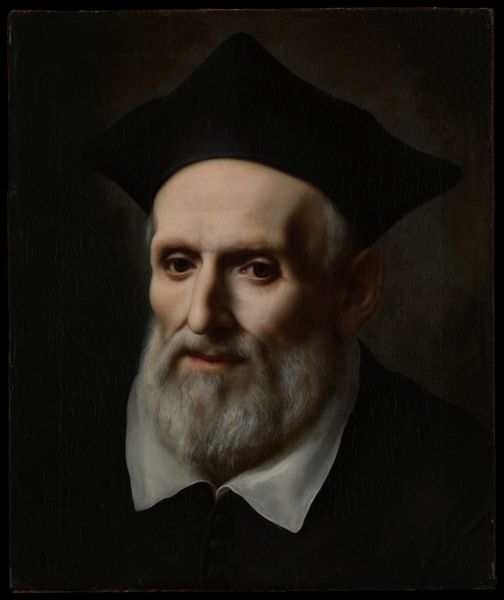
painting, oil-paint
#
portrait
#
baroque
#
dutch-golden-age
#
painting
#
oil-paint
#
sculpture
#
history-painting
#
portrait art
#
realism
Dimensions: height 91 cm, width 71 cm, depth 10 cm
Copyright: Rijks Museum: Open Domain
Editor: Here we have Jacob Backer’s *Portrait of Johannes Lutma*, believed to have been completed sometime between 1638 and 1651. Lutma seems intensely focused; it’s a compelling image. What's your read on this piece? Curator: Well, Backer situates Lutma, an esteemed goldsmith, firmly within a burgeoning Dutch Republic eager to celebrate its skilled tradesmen. This wasn’t simply about commemorating a face, it was about valorizing labor and craftsmanship in a society that was redefining itself through commerce and innovation. Editor: So, it's almost like propaganda in a way? Curator: Propaganda isn't quite the right word, as that tends to suggest something overtly manipulative. Instead, consider this portrait as actively participating in shaping a national identity. Note the tools of Lutma's trade displayed prominently; what statement is Backer making by showing us these tools alongside his subject? Editor: It shows how his profession defines him. That it’s essential to his identity and place in society? Curator: Precisely! Portraits like these helped solidify the notion of Dutch prosperity and ingenuity being rooted in its people's skills. They project competence, civic pride, and industriousness. This reflects not only his success, but also that of the newly formed Dutch Republic. Editor: I see. I was focusing on the person, but it’s more about his role and what it says about Dutch society at the time. Curator: Exactly! It demonstrates the importance of looking beyond the surface to understand how socio-political forces influenced artistic expression during that period. Editor: Thank you! I’ll definitely think about portraits differently now, seeing them less as individual likenesses and more as cultural statements.
Comments
rijksmuseum about 2 years ago
⋮
Lutma must have been proud of his salt cellars. In this portrait he is depicted next to one. No silversmith before him had had himself painted in this way, with an exact portrayal of one of his masterpieces. Lutma may have been referring to the fact that many painters had depicted Adam van Vianen’s famous ewer of 1614.
Join the conversation
Join millions of artists and users on Artera today and experience the ultimate creative platform.
